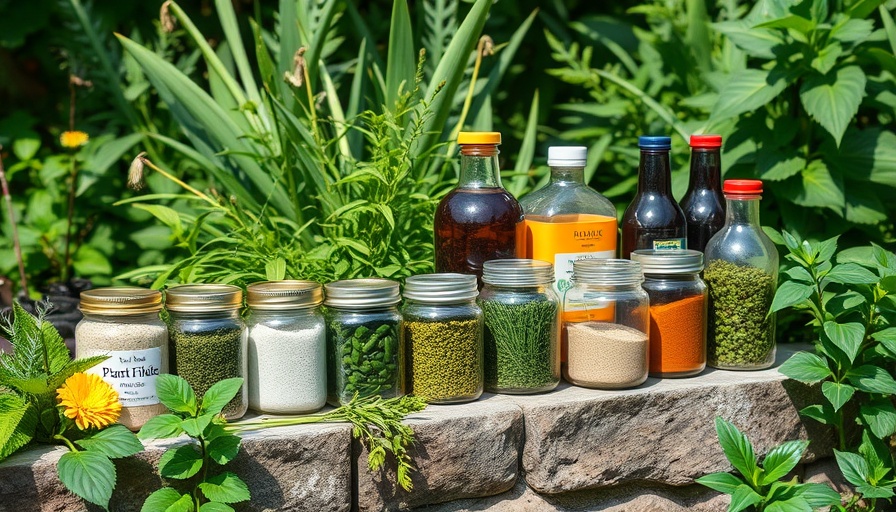
Understanding the Basics of NPK for Thriving Gardens
If you're a gardening enthusiast or just stepping into the world of plant care, understanding what NPK means can be a game changer. NPK represents the three essential nutrients that plants need: nitrogen (N), phosphorus (P), and potassium (K). These nutrients play critical roles in plant health and growth, and knowing how to read fertilizer labels will empower you to create vibrant, thriving gardens.
The Role of Each Nutrient in Plant Growth
Each component of the NPK ratio serves a unique purpose. For instance, nitrogen is crucial for leafy growth and is particularly important for vegetables like lettuce and spinach. Without adequate nitrogen, plants may exhibit yellowing leaves and stunted growth.
Phosphorus, the second element in the NPK triad, is pivotal during the plant’s early development and flowering stages. It contributes to strong root systems, enhances blooming, and helps plants withstand adverse conditions. Its significance can’t be overstated, especially for new gardeners looking to establish strong plants.
Potassium ensures that plants are resilient in the face of disease and environmental stressors. It supports overall plant health, aiding in water retention and nutrient transportation within the plant. Thus, a balanced NPK ratio means healthier plants that are better equipped to deal with challenges in their environment.
How to Interpret NPK Ratios on Fertilizer Labels
When inspecting fertilizer bags, the NPK ratio is typically displayed in a sequence of three numbers, such as 10-5-7. This means the fertilizer contains 10% nitrogen, 5% phosphorus, and 7% potassium. Higher values indicate a stronger concentration of that nutrient, which can be beneficial depending on the specific plant needs.
For instance, a balanced garden fertilizer might read as 7-7-7, perfect for general use across various plants. However, a formula like 3-0-3 would be more effective for leafy greens as it provides ample nitrogen without unnecessary phosphorus.
Timing is Everything: When to Fertilize Your Plants
Knowing when to apply fertilizer is just as critical as choosing the right product. Early spring is often the best time to give your garden a nutrient boost, as plants are just waking up from their winter dormancy. Regular fertilization throughout the growing season can contribute significantly to the overall health and yield of your garden.
Always remember to follow package instructions and observe plant responses. If plants look bushy and green, odds are your fertilizing routine is on point. On the other hand, if growth appears leggy or discolored, consider adjusting your application timeline or nutrient balance.
Additional Considerations for Fertilization
As you navigate the world of fertilizers, remember the importance of micronutrients and secondary nutrients, which are also vital for plant health. Elements such as calcium, magnesium, and sulfur work in tandem with NPK to promote vibrant, robust plant growth.
Furthermore, experimenting with organic fertilizers can provide a sustainable way to nurture your plants while enhancing the soil ecosystem. Ingredients such as compost, bone meal, and fish emulsion not only supply essential nutrients but improve soil health overall.
The Impact of Local Climate on Fertilizer Needs
Your local climate and soils play a significant role in determining how often and what type of fertilizer to use. Warmer climates may require more frequent applications, while cooler ones may need less. Assessing soil health through testing can guide you in adjusting your fertilizer strategy, ensuring your plants receive the right nutrients at the right times.
Creating a Personalized Fertilizer Plan
Once you familiarize yourself with NPK and your garden's particular needs, creating a personalized fertilization plan becomes more manageable. Consider documenting your findings in a gardening journal or using tools like garden apps to keep track of what works best for your plants.
Over time, you’ll discover the optimal NPK ratios and coverage schedules that lead to the lushest plants, whether they're flowering beauties or a delicious vegetable garden.
As you delve deeper into gardening, don’t hesitate to experiment and learn through experience. The more you engage with your plants, the more you’ll understand their unique needs and how to meet them effectively!
If you're ready to elevate your gardening game, start by inspecting your current fertilizer and making adjustments based on what you’ve learned. Whether you're a novice or a seasoned pro, understanding NPK is the first step to achieving a garden that thrives.
 Add Row
Add Row  Add
Add 




Write A Comment